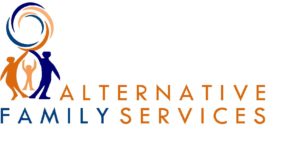The Ongoing Evolution of Child Welfare

Our commitment to children, youth, and families remains stronger than ever at Alternative Family Services.
As many AFS staff members will readily tell you, the child welfare system today is rife with misconceptions. Let’s dive into what the child welfare system looks like in the U.S. today and how it has evolved.
The child welfare system: Overview of the recent past
Historically, child protective services would be called when there was an allegation of abuse or neglect reported, or when police respond to a call that results in Child Protective Services (CPS) being called. Sometimes, numerous calls are made prior to CPS involvement.
Additionally, a youth would be placed into foster care when a primary caretaker is no longer able to take care of a child – for example, if a parent is incarcerated or hospitalized for behavioral health reasons.
County Child Protective Services (CPS) and sometimes the Community Care Licensing (CCL) Division of the California Department of Social Services conduct investigations into abuse and neglect. Foster Family Agencies (FFAs) work collaboratively with these organizations the entire time a youth is placed in care to establish the best individual case plan for the client and their family. It is important to note that it is county or state officials who make the final call around
How is the child welfare system evolving?
There have been two big trends in child welfare of late, primarily due to The Family First Prevention Services Act:
- A greater emphasis on preventing youth from entering foster care in the first place
- Preference towards kinship care in instances where a youth does enter foster care
Preventing foster care placements in the first place
In the past, most children represented in the child welfare and foster care system found themselves in the care of foster parents due to issues of abuse or neglect. Over the years, however, some critics have charged that too often, poverty is conflated with neglect.
Here at AFS, we have fully embraced this preventative approach, focusing on preventative and wraparound services to ensure families have the supports and tools they need before foster care would become an option. For example, Intensive Family Preservation Services and our Enhanced Care Management program both seek to provide support to families as early on as possible.
Prioritizing kinship care and supporting reunification
In instances where a youth is placed in foster care, CPS and FFAs are now heavily prioritizing and favoring kinship placements as much as possible. Kinship care refers to the care for the child or children by family members (who are not their biological parents) or close family friends.
The shift towards kinship placement by child welfare and foster family agencies reflects a growing recognition of their advantages of placing foster youth in the home of someone they know (i.e. a kinship placement). Here at AFS, we recognize that children and teens thrive best within a nurturing family environment supported by positive interactions within and with the wider community.
And then for those who do end up in foster care, reunification with parents or primary caretakers is the main goal whenever that is potentially possible. Both here at AFS and within the wider child welfare space, the main goal is always that a youth in care returns home whenever feasible. While foster families are key to ensuring that youth are cared for and nurtured in the short-term, statistics show in the long-term it is best for the children and birth parents to be together full time.
Youth often prefer a home where they are comfortable and with people they know intimately and love, as opposed to a foster home, no matter how supportive. Plus, reunification – when done well, with the needs of youth and biological families centered – can help ensure that youth do not re-enter the child welfare system later on in life.
Here, at AFS, we provide a variety of support to both youth and biological families to ensure reunification. A professional team, including a parent partner, teaches, guides and assists parents through the work on the skills they need to help their family heal and thrive, including facilitating support groups and mental health services for youth and biological families.
Embracing a new way forward for child welfare
Our commitment to children, youth, and families remains stronger than ever at Alternative Family Services. Recently, we have expanded vital programs, strengthened partnerships, and embraced innovation, all in service of creating lasting change.
“We have embraced the challenge of reimagining how we deliver hope and healing while staying true to our core mission. Our four strategic priorities: Diversification, Service Excellence, Clarity, and Accountability continue to guide us in this effort. They provide a framework for building stronger relationships, achieving measurable results, and fostering a culture of collaboration and trust,” AFS CEO Marsha Lewis-Akyeem has said.
